Welcome, young explorers, to the fascinating world of animals! Animals are an integral part of our planet and play a vital role in maintaining the delicate balance of nature. Learning about wildlife can be an incredibly exciting and rewarding experience for kids like you.
In this introduction, we will explore the topic of animals, and I will share with you the numerous benefits of learning about these incredible creatures.
Animals come in all shapes, sizes, and colors. From the tiniest insects to the magnificent elephants, from the speedy cheetahs to the graceful dolphins, the animal kingdom is full of diversity and wonder. By learning about animals, you will discover a whole new world filled with amazing facts, intriguing behaviors, and unique adaptations that allow them to survive in various habitats.
So why is it important for kids to learn about animals? Well, there are many reasons! First and foremost, learning about wildlife helps us develop a deep appreciation and respect for the natural world. When we understand the value of animals and their habitats, we are more likely to take actions to protect them and conserve their environments.
Studying animals also fosters curiosity and a sense of wonder. Imagine learning about a bird that can mimic the sounds of other animals or a lizard that can change its colors to blend into its surroundings. These captivating characteristics spark our imagination and ignite a desire to explore and learn more about the world around us.
Learning about animals also promotes empathy and compassion. Animals have their own unique ways of communicating, forming bonds, and caring for their young. Understanding their emotions and needs helps us develop empathy, not just for animals but also for other humans. It teaches us to respect and coexist with all living beings on our planet.
Lastly, exploring the world of animals can be a lot of fun! Whether it’s visiting a zoo, watching nature documentaries, or reading epic books for kids about animals, there is always something exciting to learn. You’ll be amazed by the incredible variety of species and the fascinating stories that each one carries.
So get ready to embark on an incredible journey into the wild world of animals. Through this exploration, you will gain knowledge, develop a love for nature, and become stewards of the environment. Let’s dive in and discover the wonders of the animal kingdom together!
Table of contents
Fun Facts and Information
Welcome, young explorers, to the exciting world of animals! From the mighty lion to the tiny hummingbird, our planet is filled with an incredible variety of creatures. Today, we embark on a thrilling adventure as we uncover some captivating facts about animals.
Get ready to be amazed by their unique characteristics, fascinating habitats, and intriguing behaviors. So, put on your safari hats, grab your binoculars, and let’s dive into the wild world of animals!
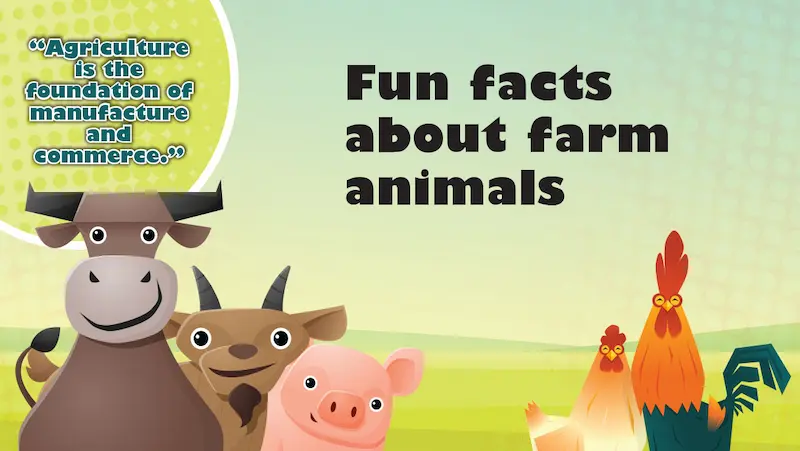
The Charming Chameleon:
Our first stop takes us to the rainforests of Madagascar, where we encounter the charismatic chameleon. Did you know that chameleons can change their color? They do this not only to blend in with their surroundings but also to communicate their emotions. From bright greens to fiery reds, these master artists can create a mesmerizing rainbow of hues!
The Playful Dolphins:
Dolphins, those joyful acrobats of the sea, are next on our list. These intelligent creatures are known for their playful nature and impressive communication skills. Did you know that dolphins have their own unique whistle, just like a personal signature? They use these whistles to identify themselves and to call out to their friends in the vast ocean.
The Resourceful Honeybees:
Let’s buzz over to the busy world of honeybees. These tiny creatures are the ultimate team players, living in colonies with a well-defined hierarchy. Did you know that honeybees are the only insects that produce food consumed by humans? They work tirelessly to collect nectar from flowers, transforming it into golden, delicious honey—a true gift from nature!
The Clever Crows:
Prepare to be amazed by the cleverness of crows, some of the smartest birds in the animal kingdom. These feathered geniuses can solve complex puzzles and even use tools to get what they want. They are also known to have excellent memories and can recognize human faces. So, next time you see a crow, make sure you say hello!
The Sneaky Octopuses:
Venturing into the depths of the ocean, we encounter the mysterious octopuses. These masterful escape artists have a remarkable ability to change both their color and texture to blend in with their surroundings. But their camouflage skills are not their only trick! Did you know that octopuses can squeeze through the tiniest of gaps due to their incredible flexibility? They truly are the Houdinis of the underwater world!
Interactive Activities
When it comes to children’s education, finding creative and interactive ways to engage their minds is key. By offering interactive activities for kids like quizzes, puzzles, coloring pages, or DIY projects, we can provide children with opportunities to learn while having fun.
In this blog, we will explore the benefits of interactive activities and share some exciting ideas centered around animals. These activities will not only captivate children’s attention but also foster their curiosity and love for learning.
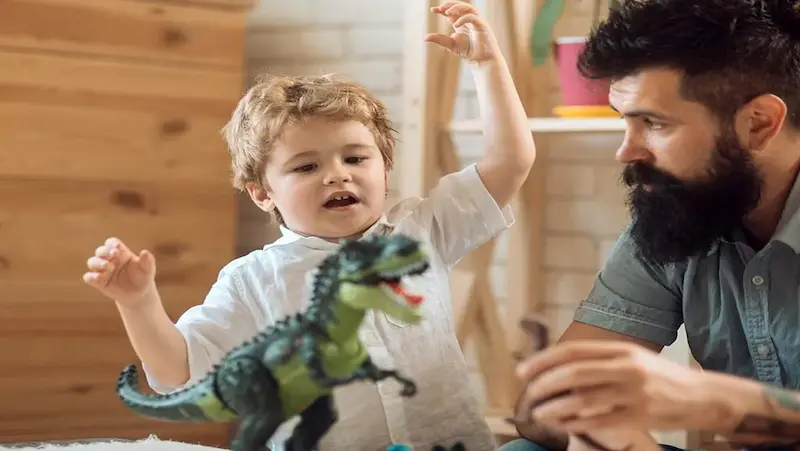
Quizzes:
Quizzes are a fantastic way to make learning enjoyable and engaging. Create animal-themed quizzes with multiple-choice questions that cover various topics such as habitats, diets, or physical characteristics. Kids can test their knowledge and learn interesting facts about their favorite animals. You can also organize friendly competitions or offer rewards to make the experience even more exciting.
Puzzles:
Puzzles are fantastic brain teasers that enhance problem-solving and critical thinking skills. Design animal-themed puzzles with varying difficulty levels to cater to different age groups. Include jigsaw puzzles, crosswords, or word searches where kids need to find animal-related words. These activities not only entertain but also improve concentration and cognitive abilities.
Coloring Pages:
Coloring pages are timeless classics that provide a creative outlet for children. Select a variety of animal illustrations and provide printable coloring pages or digital options. Encourage children to use their imagination and explore different colors while learning about animals. This activity helps develop fine motor skills, hand-eye coordination, and color recognition.
DIY Projects:
DIY projects offer a hands-on learning experience that sparks children’s creativity. Provide step-by-step instructions for creating animal-themed crafts for kids or models using simple materials like paper, cardboard, or clay. Kids can construct their favorite animals, such as making a paper plate lion or a clay turtle. This activity encourages problem-solving, fosters imagination, and instills a sense of accomplishment.
Virtual Field Trips:
Incorporate technology by organizing virtual field trips to zoos, aquariums, or wildlife sanctuaries. Utilize online games for kids resources that offer virtual tours, live animal webcams, or interactive educational platforms. Children can explore different habitats, observe animal behaviors, and learn from experts in the field. Virtual field trips allow children to expand their knowledge and broaden their horizons without leaving their homes.
Recommended Books and Resources
One fascinating topic that captivates the imagination of children is the animal kingdom. Whether your child is a budding zoologist or simply curious about the wonders of nature, here are some age-appropriate books, websites, and educational resources that will allow you and your kids to embark on an exciting animal adventure together.

Books
Books have the power to transport us to different worlds and ignite our imagination. Here are some recommended books that will engage your kids and expand their knowledge about animals:
a) “National Geographic Kids:
Ultimate Weird but True” by National Geographic Kids:
This delightful book is filled with incredible facts, jaw-dropping photos, and quirky animal stories for kids that will leave your kids amazed. It’s an excellent choice for young animal enthusiasts who love fun and fascinating trivia.
b) “The Animal Book:
A Visual Encyclopedia of Life on Earth” by DK Publishing:
This visually stunning encyclopedia provides a comprehensive overview of the animal kingdom. Packed with stunning photographs and engaging text, it covers a wide range of species and habitats, making it perfect for children who want to delve deeper into animal diversity.
c) “Diary of a Worm” by Doreen Cronin:
This humorous and charming picture book takes a unique perspective on the animal world. Follow the adventures of a young worm as he navigates his everyday life, offering a fresh and entertaining look at the animal kingdom through the eyes of a worm.
Websites
In addition to books, the internet offers a wealth of resources to enhance your child’s understanding of animals. Here are some reputable websites that provide engaging and educational content:
a) National Geographic Kids
National Geographic Kids is a treasure trove of information, featuring animal profiles, videos, games for kids, and quizzes. The website is designed specifically for children and is a great resource for exploring various aspects of the animal world in a fun and interactive way.
b) San Diego Zoo Kids
San Diego Zoo Kids offers a virtual zoo experience, providing live animal cams, educational videos, and activities. It’s a fantastic website for observing animals in their natural habitats and learning about conservation efforts.
c) Smithsonian’s National Zoo & Conservation Biology Institute
The National Zoo’s website offers a range of resources for kids, including animal webcams, educational games, and fascinating articles. It also provides valuable insights into conservation and animal care, promoting a deeper understanding of wildlife preservation.
Educational Resources
To further enrich your child’s learning experience, consider incorporating educational resources that combine hands-on activities with animal exploration. Here are a few options to consider:
a) “Animalium Activity Book” by Katie Scott and Jenny Broom:
This activity book complements the popular “Animalium” book and encourages children to interact with the animal kingdom through puzzles, drawing, and coloring. It’s an engaging way to reinforce learning and creativity.
b) Nature documentaries and shows:
Watching nature documentaries together as a family can be an awe-inspiring experience. Documentaries such as BBC’s “Planet Earth” series and DisneyNature films provide breathtaking visuals and captivating storytelling, exposing children to the wonders of the animal world.
c) Local zoos and wildlife centers:
Visiting your local zoo or wildlife center offers a hands-on experience that allows children to observe and learn about animals up close. Many zoos offer educational programs, guided tours, and interactive exhibits, providing a unique opportunity for your child to engage with wildlife experts.
Safety Tips and Pet Recommendations
Pets bring immense joy, companionship, and love to our lives. Whether you’re a seasoned pet owner or considering adding a new furry friend to your family, it’s essential to prioritize safety and make informed choices.
This blog aims to provide valuable safety tips for interacting with animals and offer recommendations for child-friendly pets while emphasizing the responsibilities that come with pet ownership. By following these guidelines, you can ensure a safe and harmonious relationship with your beloved pets.
Safety Tips for Interacting with Animals
Approach with Caution: Whether it’s a familiar pet or a new acquaintance, it’s crucial to approach animals with care. Move slowly and avoid sudden gestures or loud noises that might startle them. Give them the opportunity to approach you at their own pace, especially if they seem hesitant or unsure.
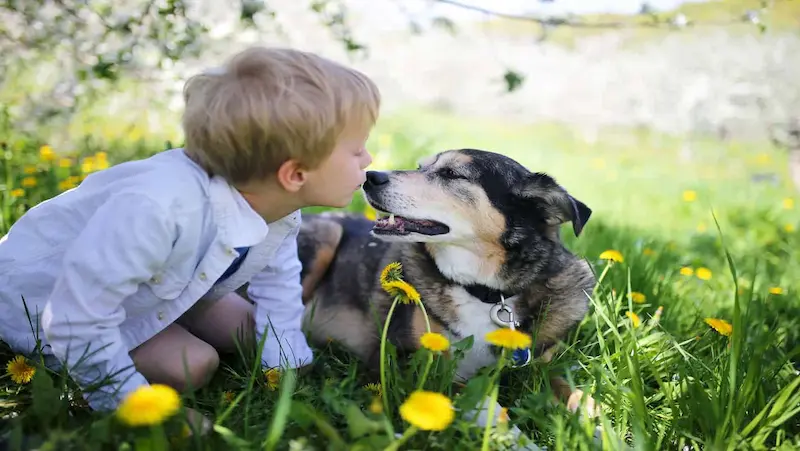
Respect Boundaries: Animals, like humans, have personal boundaries. If a pet retreats, shows signs of distress, or growls, it’s important to give them space. Never force physical contact or invade their personal space without their consent.
Gentle Touch: When petting animals, use a gentle touch and avoid rough handling or tugging. Be mindful of their body language and reactions. If they become agitated or show signs of discomfort, it’s best to stop and allow them to relax.
Supervise Interactions: Always supervise interactions between children and pets. Educate children about the appropriate way to touch and play with animals, emphasizing the importance of being gentle and respecting their boundaries. Teach them not to pull tails, ears, or engage in rough play that may harm the animal.
Teach Hand-Washing: Encourage hand-washing before and after interacting with animals. This simple practice helps prevent the spread of bacteria or germs that may be present on their fur or in their living environment.
Child-Friendly Pets and Their Responsibilities
Dogs: Dogs are known for their loyalty and can be excellent companions for children. However, they require regular exercise, training, and attention. It’s important to choose a breed that suits your family’s lifestyle and energy levels. Responsibilities include feeding, grooming, exercise, training, and providing regular veterinary care.
Cats: Cats are independent yet affectionate animals that can be great companions for children. They require a litter box, scratching post, toys, and regular veterinary care. Responsibilities include feeding, grooming, providing a safe indoor environment, and ensuring they have opportunities for play and exercise.
Fish: Fish can be a great first pet for children, as they are low-maintenance and offer a calming presence. Responsibilities include cleaning the aquarium, feeding them appropriate food, and ensuring the water parameters are suitable for the fish.
Small Mammals: Hamsters, guinea pigs, rabbits, and gerbils are popular choices for families with children. They require appropriate cages or enclosures, a balanced diet, daily exercise, and regular veterinary care. It’s important to research the specific needs of each species to provide optimal care.
Birds: Birds can be intelligent and social pets. However, they require a considerable commitment in terms of time, attention, and care. Responsibilities include providing a suitable cage, a balanced diet, mental stimulation, and regular veterinary check-ups.
Wildlife Conservation
Nature’s vibrant tapestry is woven with a rich diversity of flora and fauna, and wildlife plays a vital role in maintaining the delicate balance of ecosystems. However, with rapid urbanization, climate change, and habitat destruction, the survival of numerous animal species hangs in the balance.
Wildlife conservation has emerged as an urgent global concern, demanding concerted efforts from individuals, communities, and governments alike.
In this blog, we will explore the significance of wildlife conservation, discuss effective ways to protect animals, and highlight how children can make a positive impact on this crucial cause.
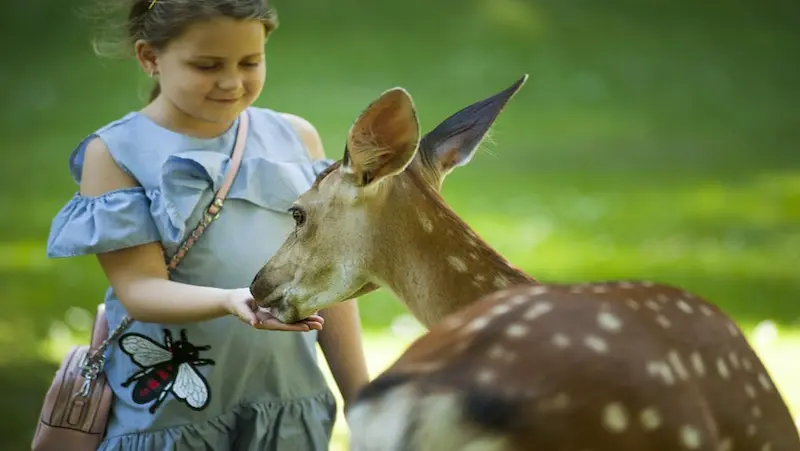
The Importance of Wildlife Conservation
Biodiversity Preservation: Wildlife conservation helps maintain biodiversity, which is essential for the stability and health of ecosystems. Each animal species contributes to the intricate web of life, playing unique roles in processes such as pollination, seed dispersal, and natural pest control. The loss of a single species can disrupt the entire ecosystem, leading to a chain reaction of adverse consequences.
Ecological Balance: Wildlife acts as an indicator of the overall health of ecosystems. For instance, the presence of top predators, like lions or wolves, helps regulate prey populations and maintain a balanced ecosystem. When species are lost or their populations decline, it can lead to imbalances, including overpopulation of certain species or increased vulnerability to invasive species.
Environmental Stability: Forests, wetlands, and other natural habitats provide essential ecosystem services, including water purification, climate regulation, and carbon sequestration. By conserving wildlife and their habitats, we protect these critical services, contributing to the overall stability of our environment and mitigating the impacts of climate change.
Scientific and Medical Advancements: Wildlife conservation is closely linked to scientific research and discoveries. Many species hold immense potential for medical breakthroughs, as their unique genetic makeup often contains compounds with pharmaceutical properties. Preserving wildlife ensures that future generations can continue to benefit from these discoveries.
Protecting Wildlife: Effective Strategies
Habitat Conservation: Protecting and restoring natural habitats is crucial for wildlife survival. This includes creating and expanding protected areas, establishing wildlife corridors, and implementing sustainable land-use practices. By safeguarding habitats, we provide animals with safe havens to thrive and maintain their natural behaviors.
Combatting Illegal Wildlife Trade: The illegal trade in wildlife and wildlife products is a significant threat to many species. Governments, organizations, and individuals must collaborate to combat this trade through strengthened law enforcement, raising awareness, and reducing demand for products derived from endangered animals.
Sustainable Agriculture and Forestry Practices: Encouraging sustainable agricultural practices, such as organic farming and agroforestry, reduces habitat destruction and the use of harmful pesticides, benefiting both wildlife and human communities. Similarly, promoting responsible forestry practices, such as selective logging and reforestation, helps protect habitats and preserve biodiversity.
Children and Wildlife Conservation: Making a Positive Impact
Public Awareness and Education: Raising awareness about the importance of wildlife conservation is vital. Public outreach programs, educational campaigns, and community involvement can inspire individuals to make conscious choices and support conservation efforts. By fostering empathy and understanding, we can instill a sense of responsibility towards protecting wildlife.
Education and Awareness: Educating children about wildlife conservation from an early age is key to fostering a lifelong appreciation and understanding of nature. Encourage children to read books, watch documentaries, and participate in educational programs that promote environmental awareness.
Engage in Conservation Activities: Children can actively participate in conservation efforts by engaging in activities like planting native trees, building birdhouses or bat boxes, and creating butterfly gardens. These hands-on experiences cultivate a sense of environmental stewardship and empower children to contribute to wildlife conservation.
Support Local Conservation Initiatives: Encourage children to get involved in local conservation initiatives, such as clean-up drives, wildlife rehabilitation centers, or volunteering at animal shelters. These experiences provide valuable insights into the challenges faced by wildlife and instill a sense of responsibility.
Spread the Word: Children can utilize the power of social media or traditional communication channels to raise awareness about wildlife conservation among their peers and wider communities. Encourage them to share information, conservation success stories, and sustainable practices to inspire positive change
Conclusion
In conclusion, understanding and appreciating animals is an essential part of a child’s development and can be a rewarding experience for parents as well. Throughout this discussion, we have explored the importance of animals in our lives and the numerous benefits that come from learning about them.
Firstly, we have discovered that studying animals fosters empathy and compassion in children. By observing their behaviors, habitats, and interactions, children develop a sense of connection with the natural world and a deeper understanding of the needs and emotions of animals. This empathy extends beyond animals to encompass other living beings and even the environment, promoting a more sustainable and compassionate mindset.
We offer engaging coding classes for kids, where they can learn various kids coding languages, including Python for kids. Our free coding for kids program allows them to explore the fundamentals of coding in a fun crafts for kids and interactive way. With coding games for kids and free online coding classes, learning to code becomes an enjoyable experience.
Secondly, exploring animals cultivates curiosity and a love for learning. Children naturally possess an innate curiosity about the world around them, and animals provide an endless source of fascination. Encouraging children to ask questions, conduct research, and seek out new information about animals not only enhances their knowledge but also nurtures their critical thinking and problem-solving skills.
Lastly, exploring animals opens doors to various career paths and educational opportunities. As children delve into the world of animals, they may discover their passion for biology, conservation, veterinary science experiments for kids, or other related fields. By encouraging their interests and providing them with educational resources, parents can empower their children to pursue these passions and potentially contribute to the conservation and protection of animal species in the future.
In light of these key points, I encourage parents and children to continue their exploration and learning about animals. There are numerous ways to engage with animals, from reading books for kids and watching documentaries to visiting wildlife centers or volunteering in local conservation projects.
Encourage your child’s curiosity, answer their questions, and seek out new opportunities for animal-related experiences. Remember that the journey of discovering and appreciating animals is a lifelong one, and every step taken brings us closer to a better understanding of the natural world and our place within it.
Discover the boundless horizons of learning with BrightChamps. As an innovative EdTech company offering a range of courses including robotics, financial education, and coding for kids, BrightChamps is your partner in nurturing young minds for a tech-savvy and financially astute future.
Frequently Asked Questions
A1: Learning about animals helps kids develop empathy, curiosity, and an understanding of the natural world. It encourages environmental awareness and fosters a love for wildlife.
A2: Engage your child with interactive activities such as animal-themed games, puzzles, and books. Visiting zoos, wildlife sanctuaries, and nature centers can also provide hands-on learning experiences.
A3: Yes, certain animals like dogs, cats, rabbits, and fish are commonly kept as pets and are known to be child-friendly. However, it’s important to research and choose a pet that suits your family’s lifestyle and can be properly cared for.
A4: Involve your child in activities such as nature walks, bird watching, and volunteering at local animal shelters or wildlife organizations. Discuss the importance of conservation and the impact individuals can make.

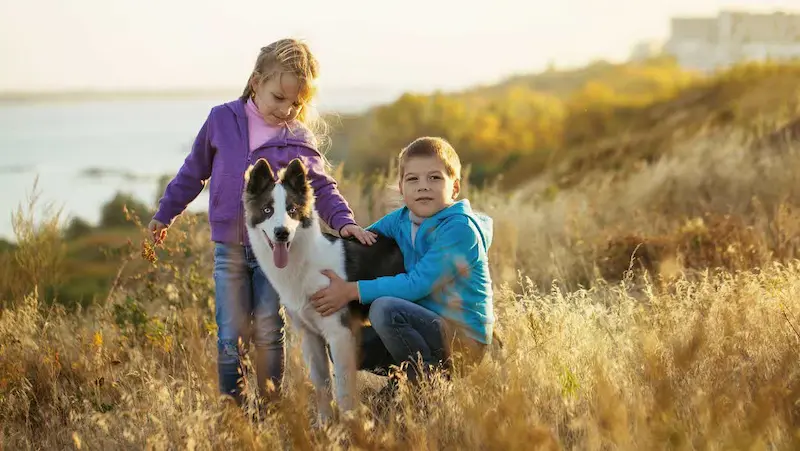
 We are an army of educators and passionate learners from BrightChamps family, committed to providing free learning resources to kids, parents & students.
We are an army of educators and passionate learners from BrightChamps family, committed to providing free learning resources to kids, parents & students.












